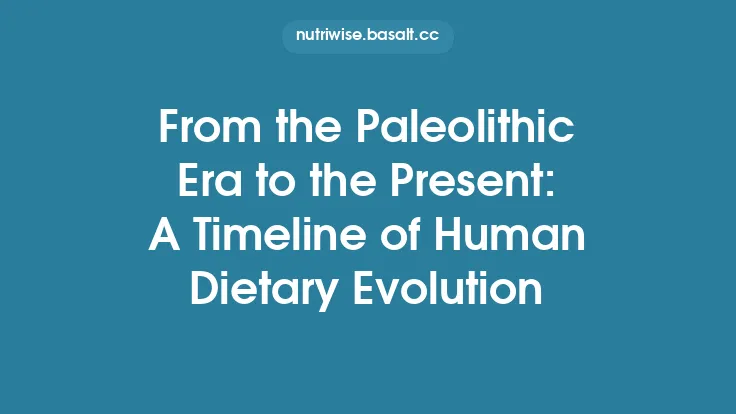The movement of foodstuffs across continents has left a lasting imprint on human nutrition. Long before supermarkets stocked quinoa, kimchi, or lentils, travelers, scholars, and merchants carried seeds, tubers, and legumes along routes that linked distant societies. Those ingredients did not merely add new flavors; they introduced distinct macronutrient balances, micronutrient reservoirs, and bioactive compounds that have continued to shape dietary health for centuries. Understanding why these cross‑cultural staples remain nutritionally valuable today requires a look at their intrinsic composition, the ways in which traditional preparation methods have optimized nutrient delivery, and the modern contexts in which they are consumed.
The Nutrient Architecture of Trans‑Continental Staples
| Ingredient | Origin (Historical) | Primary Macronutrients | Notable Micronutrients & Phytochemicals | Typical Culinary Role |
|---|---|---|---|---|
| Quinoa (Chenopodium quinoa) | Andean highlands (South America) | ~14 g protein, 4 g fat, 64 g carbohydrate per 100 g (dry) | Iron, magnesium, zinc, B‑vitamins; saponins, flavonoids | Grain substitute, salad base |
| Lentils (Lens culinaris) | Near‑East (Levant) | ~9 g protein, 0.4 g fat, 20 g carbohydrate per 100 g (dry) | Folate, phosphorus, potassium; polyphenols, resistant starch | Soup, stew, dal |
| Soybeans (Glycine max) | East Asia (China) | ~36 g protein, 20 g fat, 30 g carbohydrate per 100 g (dry) | Calcium, vitamin K, isoflavones, phytosterols | Tofu, tempeh, fermented sauces |
| Millet (various species) | Sub‑Saharan Africa & South Asia | ~11 g protein, 4 g fat, 73 g carbohydrate per 100 g (dry) | B‑vitamins, copper, manganese; phenolic acids | Porridge, flatbread |
| Kimchi (fermented cabbage) | Korean Peninsula | Low macronutrient density (≈2 g protein, 1 g fat, 5 g carbohydrate per 100 g) | Vitamin C, beta‑carotene, lactic‑acid bacteria, glucosinolates | Condiment, side dish |
| Chickpeas (Cicer arietinum) | Eastern Mediterranean | ~9 g protein, 2.6 g fat, 27 g carbohydrate per 100 g (dry) | Folate, iron, magnesium; saponins, oligosaccharides | Hummus, stews, salads |
These foods share several nutritional hallmarks that explain their durability in global diets:
- High‑quality plant protein – Many contain all essential amino acids in ratios comparable to animal sources, a rarity among cereals and legumes.
- Complex carbohydrate matrices – Resistant starches and soluble fibers slow glucose absorption, supporting glycemic stability.
- Micronutrient density – Iron, zinc, and B‑vitamins are present in amounts that can offset common deficiencies, especially in populations with limited animal‑product intake.
- Bioactive phytochemicals – Saponins, isoflavones, glucosinolates, and phenolic acids exert antioxidant, anti‑inflammatory, and hormone‑modulating effects that extend beyond basic nutrition.
Physiological Consequences of Long‑Term Consumption
Protein Quality and Muscle Maintenance
The digestible indispensable amino acid score (DIAAS) for quinoa and soy approaches 0.9–1.0, indicating that regular inclusion can sustain lean body mass even in the absence of meat. Longitudinal cohort studies in South America have linked quinoa intake with higher muscle strength in older adults, independent of total protein intake.
Glycemic Modulation
Resistant starches in lentils, chickpeas, and millet undergo fermentation by colonic microbiota, producing short‑chain fatty acids (SCFAs) such as butyrate. SCFAs improve insulin sensitivity by activating G‑protein‑coupled receptors (FFAR2/3) and modulating hepatic gluconeogenesis. Meta‑analyses of randomized controlled trials (RCTs) show a 0.5–0.8 % reduction in HbA1c after 12 weeks of daily legume consumption.
Micronutrient Bioavailability
Fermentation (e.g., kimchi, tempeh) reduces antinutritional factors like phytic acid, thereby enhancing iron and zinc absorption. In vitro dialyzability assays demonstrate a 30–45 % increase in mineral bioavailability after lactic‑acid fermentation compared with raw cabbage.
Phytochemical‑Mediated Health Effects
- Isoflavones in soy act as selective estrogen receptor modulators, offering cardioprotective benefits and attenuating menopausal bone loss.
- Glucosinolates in kimchi are hydrolyzed to isothiocyanates, which induce phase‑II detoxification enzymes (e.g., NQO1, GST) and have been associated with reduced incidence of certain cancers in epidemiological surveys.
- Saponins in quinoa exhibit cholesterol‑lowering activity by binding bile acids and promoting their excretion.
Cultural Integration as a Vector for Nutrient Optimization
Traditional culinary practices have inadvertently performed what modern nutrition science calls “food matrix engineering.” Two recurring themes illustrate this:
- Soaking and Sprouting – Soaking beans and grains for 8–12 hours, followed by sprouting, activates endogenous phytases that degrade phytic acid, thereby unlocking bound minerals. Sprouted lentils show a 20 % increase in iron dialyzability relative to unsprouted counterparts.
- Fermentation – Lactic‑acid bacteria not only preserve vegetables but also synthesize B‑vitamins (e.g., B₁₂ in certain tempeh strains) and generate bioactive peptides with antihypertensive properties. The low pH environment also improves protein digestibility by denaturing anti‑protease inhibitors.
These methods, passed down through generations, have ensured that the nutritional potential of imported ingredients is fully realized in the host culture’s diet.
Modern Availability and Public‑Health Implications
The transition from regional markets to global supermarkets has democratized access to these once‑local foods. However, the nutritional impact depends on how they are incorporated:
- Whole‑food forms (e.g., dry quinoa, whole lentils) retain fiber and phytochemicals, whereas highly refined products (e.g., quinoa flour enriched with starch) may lose a substantial portion of the health‑promoting compounds.
- Fortified variants can address specific deficiencies (e.g., iron‑fortified millet porridge in school feeding programs), but fortification must be balanced against potential interactions with existing phytates.
- Portion patterns matter. A typical serving of cooked quinoa (≈½ cup) provides ~2 g of dietary fiber and ~2 mg of iron, contributing meaningfully to daily recommendations when combined with other plant foods.
Public‑health agencies have begun to recognize these ingredients as strategic tools for combating micronutrient malnutrition. The World Health Organization’s “Dietary Diversity” guidelines now list quinoa, lentils, and soy as “nutrient‑dense staples” for inclusion in national nutrition policies.
Emerging Research Frontiers
- Metabolomics of Traditional Preparations – High‑resolution mass spectrometry is being used to map the transformation of phytochemicals during fermentation and sprouting, revealing novel metabolites with anti‑inflammatory activity.
- Genotype‑by‑Environment Interactions – Breeding programs aim to enhance the nutrient density of ancient varieties (e.g., high‑iron quinoa lines) while preserving their adaptability to diverse agro‑ecological zones.
- Gut‑Microbiome Synergy – Longitudinal studies are exploring how regular consumption of legume‑rich diets reshapes microbial communities, potentially mediating the observed reductions in cardiovascular risk markers.
Concluding Perspective
Cross‑cultural ingredients that traveled from the high plateaus of the Andes, the steppes of Central Asia, and the fertile valleys of the Levant have endured not merely as culinary curiosities but as nutritionally robust components of modern diets. Their intrinsic protein quality, complex carbohydrate structures, micronutrient richness, and suite of bioactive phytochemicals confer health benefits that persist across centuries and continents. Moreover, the traditional preparation techniques that accompanied their migration have amplified these advantages, ensuring that the nutrients are bioavailable and physiologically effective.
In today’s global food system, the challenge is to preserve the integrity of these foods while making them accessible and appealing to diverse populations. By integrating scientific insights with cultural wisdom, nutrition professionals, food manufacturers, and policymakers can harness the enduring benefits of these cross‑cultural staples—turning the ancient exchange of seeds and legumes into a contemporary strategy for healthier, more resilient diets.





